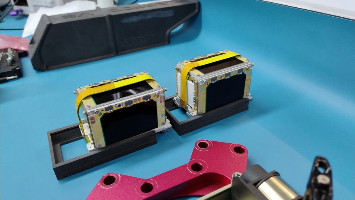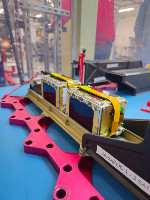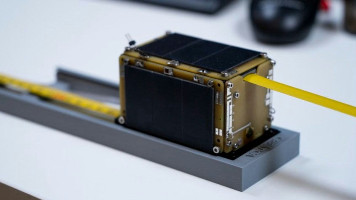| Spacecraft name | HADES-R (SmartSat, SO 124, Spain-OSCAR 124) |
|---|---|
| Spacecraft type | PocketQube |
| Units or mass | PocketQube 1.5p |
| Status | Operational (Telemetry packets on DK3WN and SatNOGS, last checked 2025-04-20) |
| Launched | 2025-01-14 |
| NORAD ID | 62690 |
| Deployer | Albapod [Alba Orbital] |
| Launcher | Falcon 9 (Transporter-12) (D-Orbit ION) (Alba Cluster) |
| Deployment | Deployed from D-Orbit ION on 2025-01-22 |
| Entity name | AMSAT-EA |
| Institution | Non-profit |
| Entity | Academic / Education |
| Headquarters | Spain |
| Manufacturer | AIVT by Hydra Space |
| Operator | AMSAT-EA |
| Partners | SmartIR, AMSAT-EA |
| Oneliner |
FM repeater and low-power active radiator. |
| Description |
The main mission for HADES-R is to be a FM repeater. As there is a small empty space available, it will be used to carry an experiment by Smart IR/Graphene Engineering Innovation Centre, GEIC University of Manchester (UK) consisting in a very low power active radiator to be tested on space conditions. The data for this experiment will be transmitted in a specific data packet in the telemetry. This experiment will be delivered to AMSAT EA for integration and will be operated by AMSAT-EA, being all its data public and open. HADES-R will offer licensed radio-amateur around the world the opportunity to relay FM voice and AX.25 / APRS 300 / 1200 bps communications. The satellite will also transmit telemetry with its status and voice and CW messages. This all will be achieved by implementing a SDR based FM and FSK repeater. The FM / FSK repeater will be available all time and opened by squelch level without the need of a subtone. As a secondary mission, the satellite will carry an experiment by Smart IR/Graphene Engineering Innovation Centre, GEIC University of Manchester (UK) consisting in a very low power active radiator to be tested on space conditions. Proposing a UHF downlink for FM voice, FSK data up to 1200 bps, APRS up to 1200 bps and FSK telemetry and experimental data up to 1600 bps and CW. Also a VHF uplink for the transponder. |
| Sources | [1] [2] [3] [4] |
| Photo sources | [1] [2] [3] |
| COTS subsystems |
|
| On the same launch |
|
Last modified: 2025-04-22



